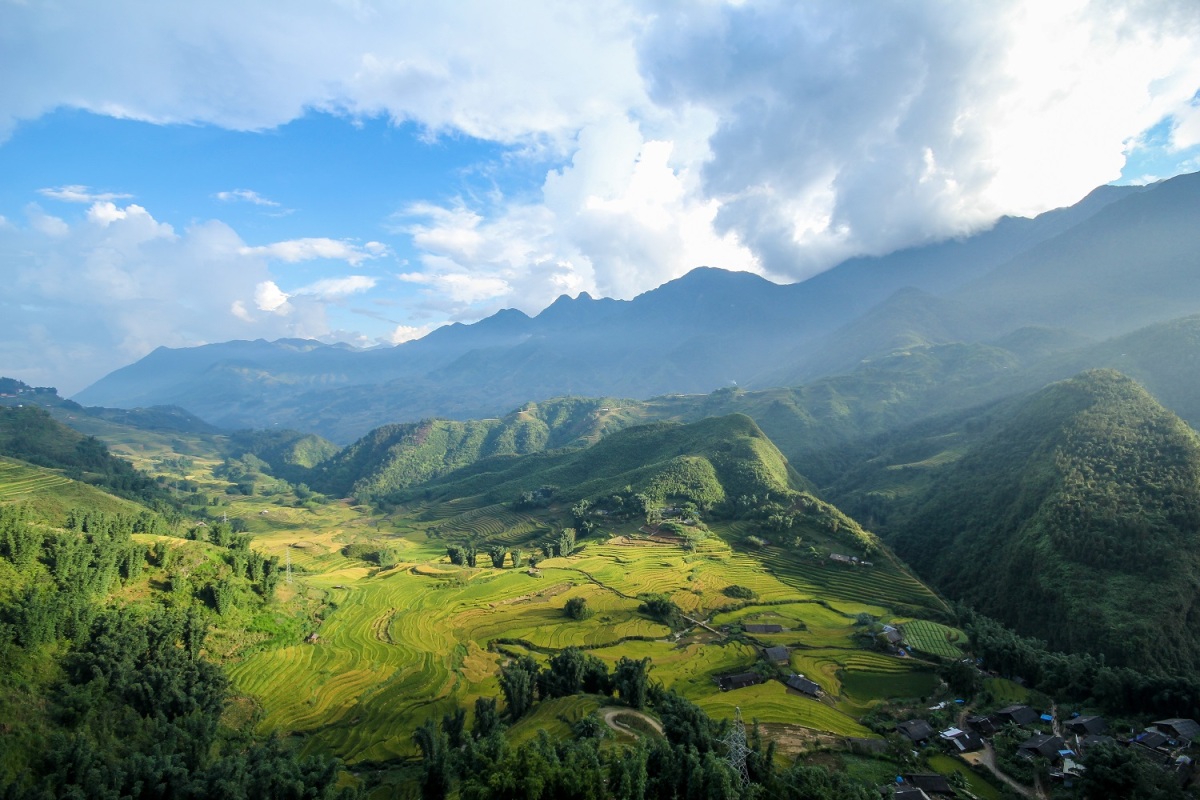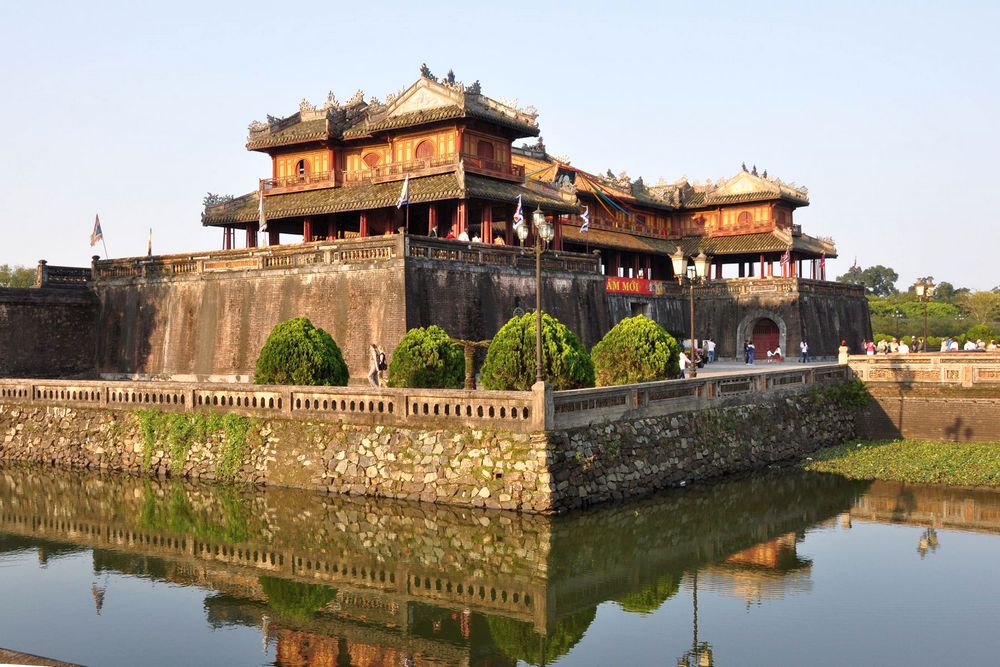Sapa Travel Guide | Everything You Need to Know Before Visiting Sapa
Sapa is a charming mountain town in northern Vietnam that has become one of the country’s top tourist destinations thanks to its stunning highland scenery, rich cultural heritage, and colorful ethnic minority communities. Here is everything you need to know before visiting in this Sapa travel guide.
Things You Need to Know Before Visiting Sapa
1. Where is Sapa?
Sapa is located in Lào Cai Province in Northwest Vietnam, about 380 km from Hanoi. Perched at an altitude of 1,600 meters above sea level, Sapa sits in the Hoang Lien Son mountain range near the border with China.
The town overlooks a beautiful valley with terraced rice fields carved into the hillsides, as well as the towering peak of Mount Fansipan, the highest mountain in Indochina at over 3,140 meters. Sapa acts as a base for visitors to explore the surrounding highlands and hill tribe villages.
2. Why is Sapa so fascinating?
Sapa offers visitors spectacular mountain scenery, trekking opportunities, and a glimpse into the culture of local ethnic minority tribes.
Breathtaking Landscapes
Sapa is surrounded by dramatic mountain landscapes blanketed in lush green rice terraces, valleys shrouded in mist, and thundering waterfalls. The changing scenery looks magical in different weather and seasons.
Colourful Hill Tribe Culture
The Sapa area is home to diverse ethnic minority groups like the Hmong, Dao, Tay, and Giay, who live in rural villages around town. Visitors can immerse themselves in the vibrant handicrafts, traditional clothing, music, and customs of these communities.
Delicious Cuisine
Sapa has excellent local cuisine, blending Vietnamese food with hill tribe flavors and ingredients. Dishes like smoked buffalo, wild mushrooms with chili and garlic, herbal mountain chicken, and corn wine are local specialties every visitor should try.
3. The best time to visit Sapa, Vietnam
Sapa has a temperate climate, making it suitable to visit all year round, but the best time depends on what kind of experience you want.
Spring (March – May)
Spring offers ideal weather conditions – warm sunny days and cool evenings. Rice terraces transform into seas of green, and flowers like orchids and rhododendrons bloom across hillsides. However, higher accommodation prices and bigger crowds come with the peak season.
Summer (June – August)
In summer Sapa enjoys beautiful clear skies, making it perfect for scenic trekking. Visitors can enjoy cultural activities and shows hosted by ethnic minority groups without large tourist numbers. Just be prepared for some wetter weather during this lush, green season.
Autumn (September – November)
Autumn brings drier weather ideal for long treks. September and October are especially lovely when dazzling golden terraced rice fields glow under blue skies in the harvest season.
Winter (December – February)
Sapa experiences chilly, damp weather in winter with temperatures dropping close to freezing at night. Mist shrouds the valley for a hauntingly atmospheric vibe. There are fewer tourists, lower rates, and the local Black Hmong’s festive celebrations.
4. How to get Sapa from Hanoi
It’s easy to reach Sapa overland from Hanoi, with different transport options available:
Overnight Train + Bus
Taking the train from Hanoi to Lao Cai at night, then switching to a shuttle bus to Sapa is the most common route. The journey takes roughly 9 hours and is very affordable. Hotels can arrange train/bus combo tickets.
Limousine Bus
For more convenience and comfort, daily limousine buses with spacious reclining seats run direct between Hanoi and Sapa taking 8-9 hours. Book tickets a few days in advance.
Private Transfer
Hiring a private car and driver for door-to-door service allows the most flexibility to make stops along the way. The 5-6 hour drive follows a beautiful route with great valley views.
No matter how you travel, the scenic overland journey is a memorable part of any visit to Sapa. Once you arrive, the cool mountain air, stunning vistas, and friendly hill tribe communities will make it clear why Sapa warrants its reputation as the treasure of northern Vietnam.
Best Attractions in Sapa
Sapa offers a wealth of sights and activities to keep visitors enthralled. From majestic mountain peaks ideal for climbing, to cascading waterfalls and vibrant local markets brimming with handicrafts” these top attractions should be on every visitor’s list.
1. Ham Rong Mountain
This peak with leisurely walking trails through terraced gardens makes an ideal half-day hike near town with gorgeous panoramas. The peak is dotted with quirky attractions like the Heaven’s Gate rock arch and a flower garden to explore.
2. Mount Fansipan – the rooftop of Indochina
Towering over Sapa at over 10,000 feet, Mount Fansipan is Vietnam’s highest peak. Hiking to the summit takes 2 days round-trip on scenic wooded trails to earn breathtaking views across the mountain ranges of Vietnam, Laos, and Southern China from the summit.
3. Cat Cat Village
Just 3 km from Sapa, this historic Black Hmong village has preserved its traditional stilt houses and stone paths. Visitors can watch locals weaving dyed cloths and appreciate the peaceful valley views. It’s an easy walk or quick taxi ride for cultural immersion near town.
4. Ta Phin Village
Tucked 12km from Sapa inside a lush green valley, Ta Phin village has a rich culture and is home to Red Dao ethnic minority communities. A day trip lets visitors take a peaceful walk around rice paddies, discover ancient cave dwellings, visit charming wooden houses, and enjoy community tourism activities.
5. Muong Hoa Valley
This expansive valley just 8 km from downtown Sapa encompasses picture-perfect vistas of terraced rice fields stepped along the sloping terrain. The 3-hour loop trek transports hikers through minority villages and lush foliage, making it one of Vietnam’s most stunning day hikes.
6. Sapa’s Waterfalls – Silver & Love Waterfall
There are rewarding treks through betel and pine forests to reach two lovely cascading waterfalls – Silver Waterfall and the split-level Love Waterfall south of Sapa. Visitors can hike between them or simply admire their powerful rush of water and pretty forest settings.
7. O Quy Ho Pass
This thrilling mountain route snakes 50 hairpin bends over 14 km between Sapa and Lai Chau Province to the west, peaking at 2,000 meters. The daredevil road treats drivers to 360-degree vistas of fog-veiled peaks for one of Vietnam’s most intense driving experiences.
8. Colorful Ethnic Markets
Exploring northern Vietnam’s vibrant tribal markets like Can Cau Saturday Market, Coc Ly Sunday Market, and Bac Ha Sunday Market lets visitors discover the unique handicrafts, foraged foods, and traditional clothing of local ethnic groups. They make for fascinating people watching and shopping opportunities.
9. Sapa Town
Beyond just a transit hub, Sapa town has its own appeal with a breezy Swiss-style aura showcasing its colonial French history. Quaint bakeries, stone church, and mountain lodges all welcome visitors to enjoy valley views over sizzling pho or gentle strumming of guitar strings in the cool evening air.
10. Other Attractions
Sapa also boasts other cultural sites like the Museum of Ethnology with centuries-old artifacts, charming stone love church, and even water parks like Sun World Fansipan Legend with fun activities like the simulated Bullet Train ride overlooking the valley.
With such diversity across natural, cultural, and historic attractions, Sapa offers fascination any time of year promising memories to last a lifetime.
Some Suggested Itineraries for a Tour in Sapa
With limited time, plotting out an efficient route to experience Sapa’s highlights is crucial. Here are some recommended 3 to 5 day itineraries to maximize your visit.
3 Days in Sapa itinerary
Day 1:
- Early morning arrival into Sapa
- Check into hotel and rest
- Light hike around Sapa sights like Ham Rong peak or Museum of Ethnology
- Overnight in Sapa
Day 2:
- Day trip hiking through terraced valleys and minority villages like Ta Phin, Cat Cat, Lao Chai.
- Overnight in Sapa
Day 3:
- Relaxing walk around Sapa town, shopping, and dining
- Afternoon transfer back to Hanoi
4 Days in Sapa itinerary
Day 1:
- Early morning arrival into Sapa
- Hotel check in and mid-day trek through Muong Hoa or Cat Cat Village
- Overnight in Sapa
Day 2:
- Full day hiking sacred Mount Fansipan or doing village homestays
- Overnight in Sapa
Day 3:
- Day trip to more remote tribal markets like Can Cau Saturday Market
- Overnight in Sapa
Day 4:
- Relaxing walk enjoying Sapa’s waterfalls and scenery
- Afternoon return to Hanoi
5 Days in Sapa itinerary
Day 1:
- Overnight train from Hanoi arrives early morning
- Light town orientation and hotel check in
- Easy afternoon walk to Silver Waterfall
- Overnight in Sapa
Day 2:
- Full day trekking through Lao Chai and Ta Van villages with homestay overnight
Day 3:
- Return to Sapa after morning in villages
- Afternoon museum visits and shopping in Sapa
- Overnight in Sapa
Day 4:
- Early drive to markets like Coc Ly or Lung Phin
- Bac Ha/Can Cau area tour- Overnight in Bac Ha homestay
Day 5:
- Morning ethnic market and flower valley visit
- Afternoon return to Hanoi With stunning scenery, vibrant cultures, and relaxing charm, Sapa is easily worth lingering 4-5 days to soak in its many charms along hiking trails, through colorful markets, and into remote village communities. Plotting out an organized route avoids missing this mountainous gem’s diverse treasures.
Conclusion
Boasting spectacular highland scenery, trekking adventures, and insights into Vietnam’s captivating hill tribes – Sapa earns its reputation as the northwest’s alluring crown jewel. Its crisp mountain air, terraced vistas, and vibrant handicrafts beckon visitors to unlock this region’s mysteries along winding village paths and market aisles.
Tempting as it is just to wander, understanding Sapa’s location, optimal visiting season, transportation routes, top attractions, and suggested itineraries ensures travelers can efficiently experience the most alluring facets of Sapa. Whether admiring stone church architecture or sampling smoked buffalo with new Hmong friends, visitors find themselves wonderfully rewarded for making the highland journey.
From the mighty peak of Mount Fansipan down through colorful textiles dancing along the streets of Bac Ha Market, Sapa offers a vibrant tapestry of adventures. Visitors may arrive amid mountain mists as strangers, but leave woven into the fabric of highland culture with memories brilliant as the yellow canola fields blooming over the valleys. Sapa Vietnam has a power to bewitch all who enter. Those who take the time to properly prepare their visit will discover all of its most treasured secrets ready to enchant heart, mind and spirit.





